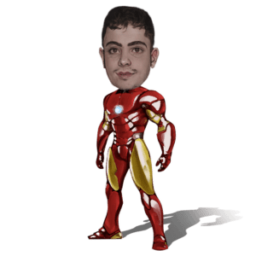The most fundamental aspect of Internet marketing is Search Engine Optimization or seo. It is a system of using online tools that you can carry out in your website to help your pages place themselves higher in search engine results, giving your website greater exposure to targeted visitors that can eventually convert into customers. On-page seo means optimizing the individual web pages to rank higher and earn more relevant traffic in search engines. On-page refers to both the content and HTML source code of a page which are optimized, whereas off-page seo refers to back links. On-page Search Engine optimization has changed over the years, so it’s important to keep up with the latest practice.
Following are the seo on page Factors:
1. Meta Optimizations
Meta Tag optimization means optimizing the title and description with the primary, secondary and tertiary keywords.
A) Meta Title Optimization:
The title should have characters between 65-70 and description should be between 150-155 characters.
Title tags are a major reason in helping search engines understand what your page is about, and they are the first impression many people have of your page. Keeping your titles under 60 characters is preferred.
B) Meta Description Optimization:
Meta Descriptions provides a conclusive summary of the concerned web pages. It is usually a short, concise paragraph of not more than 300 keywords.
2. Page speed
Page speed is one of the 200 Google ranking factors. Optimizing your landing page speed and your website results will lead to your website being upgraded in Google searches.
3. Mobile Friendly
The website being Mobile Friendly is one of the Google ranking factors. Making your website completely mobile friendly may help to increase the page rank on Google concerned with mobile searches.
4. Image Optimization
Google also provides image search results. You can achieve top ranking in Google image search result by optimizing the images title and description. Sometimes when Google cannot read certain images, optimizing them by adding precise names to the images helps.. Submitting the image site map to Google webmasters allows for an increase in page rank.
5. Keyword Density
Keyword stuffing refers to using too many primary, secondary and tertiary keywords on your website. Avoiding keyword stuffing is a thumb rule for on page Optimization. Keyword density is a ratio of total words in content over times keyword used in the content. If you will keep up the ratio, then your keyword ranking will be higher. The digital marketing analyst should implement keywords with a maximum density of 2-3%.
6. URL optimization
URL is short for Uniform Resource Locator;it is a subset of the Uniform Resource Identifier (URI) that specifies where an identified resource is available and the mechanism for retrieving it. It should never be longer than 100 characters; otherwise Internet Explorer would not be able to load the page. The URL should also be readable to the user and should not by dynamic i.e. the URL should not contain special symbols and characters (! #,$,%,&,*, etc.)
7. Content of page
Copying or rewriting of existing articles must be avoided. Even for original content, if you have already published it on another website then it’s not good for your site. While writing about a certain topic or answering a question, make sure that what you write is rational and covers both sides of a story.
ON page optimization is the safest way to achieve top rankings in Google and ON Page Optimization Training helps us in the same aspect. This is one thing which is totally in our control. It allows us to make sure that we are publishing original content and ensures that the user sees our website the way we want him to and it’s important for our benefit as on page also helps in increasing our Page Rank. These listed factors of On page Optimization are completely on our control and thus it makes On Page optimization transparent.
AUTOPOST by BEDEWY VISIT GAHZLY



